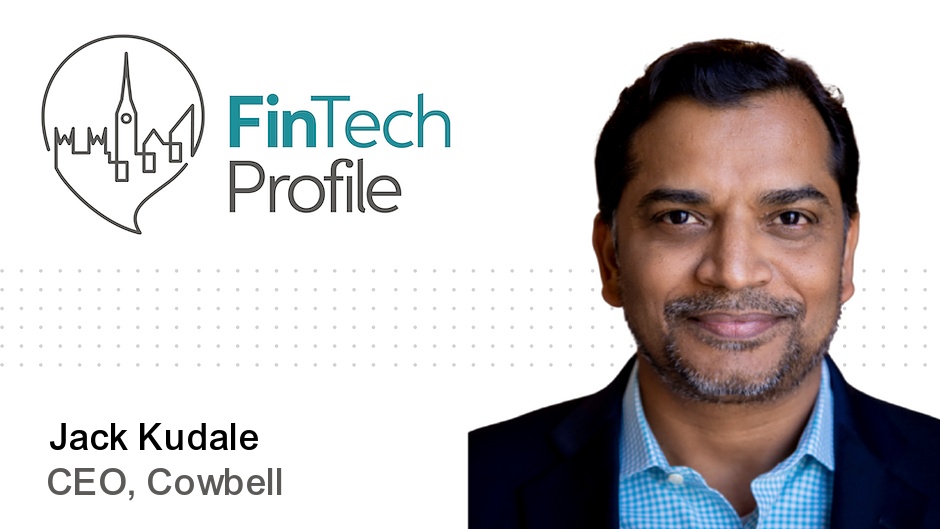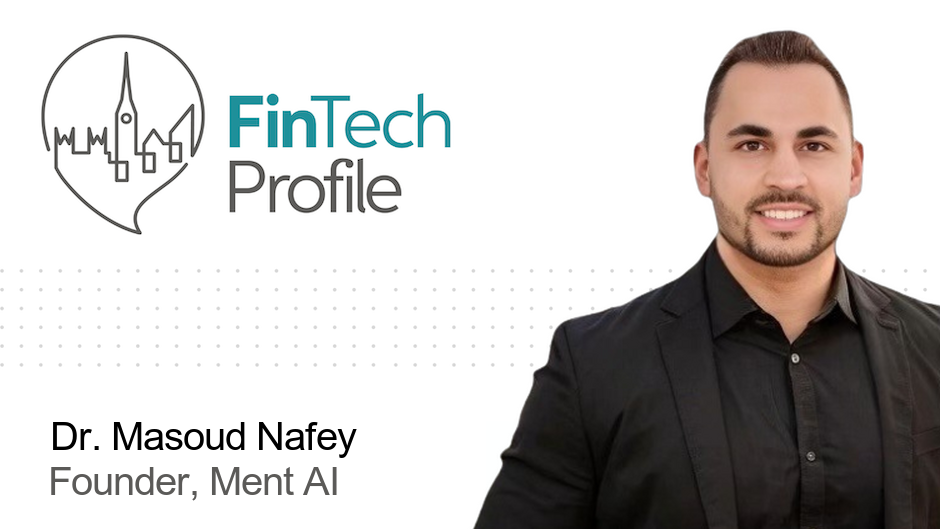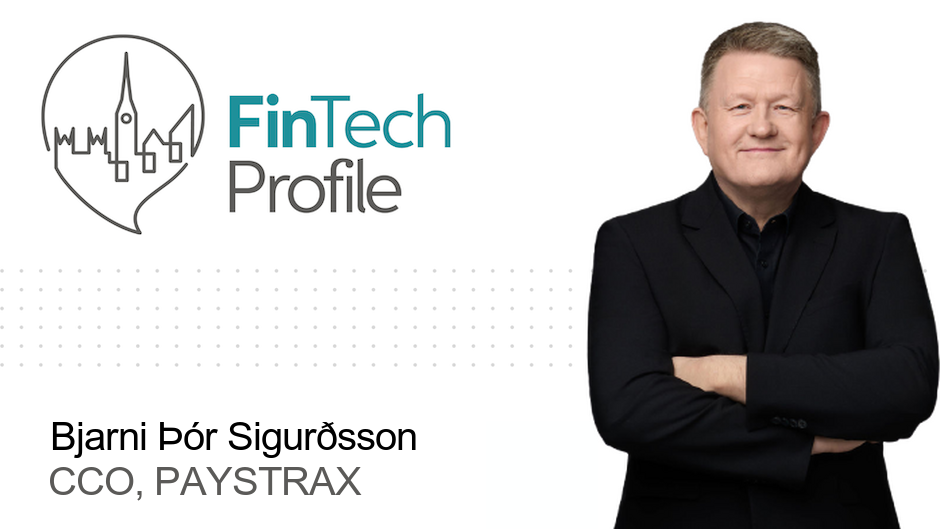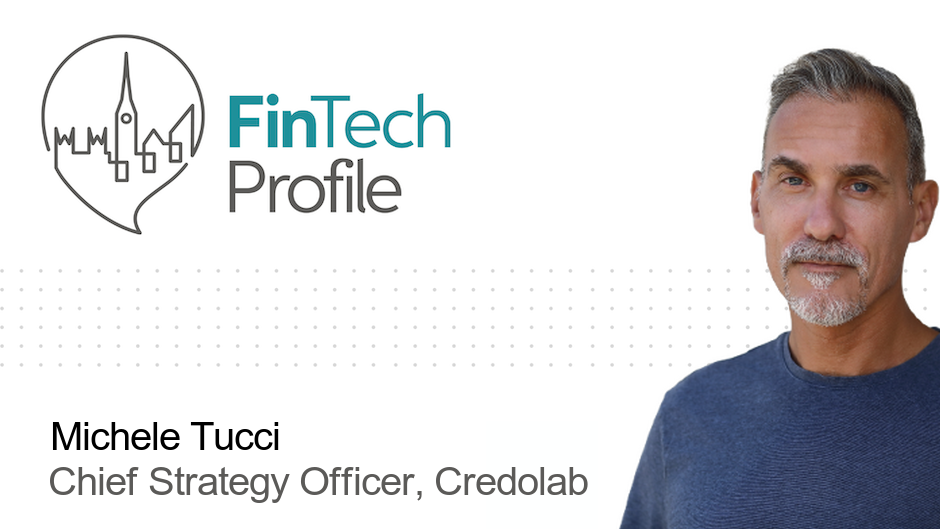Jack Kudale, Founder & CEO, Cowbell

Today we're meeting Jack Kudale, Founder & CEO at Cowbell. They specialise in harnessing technology, data and AI to provide SMEs with advanced warning of cyber risk and customized cyber insurance adaptable to the threats of today and tomorrow.
Over to you Jack - my questions are in bold:
Who are you and what's your background?
I grew up on a farm in India with limited access to education, but I pursued the American dream and have spent the last 30 years building companies in technology and cybersecurity.
I dove headfirst into the insurance industry when I recognized the immense potential for cross-industry innovation. I tackled one of the toughest challenges in insurance—cyber risk—and identified a vast market in dire need of protection: 300 million small businesses globally, employing 2 billion people and contributing 56% of the world's GDP. Seeing this opportunity to create a significant legacy by safeguarding these small businesses, I moved to Des Moines, Iowa, to receive specialized training in insurance. Subsequently, I co-founded Cowbell in 2019 with two partners.
Since then, I have established a strong reputation for my extensive network, exceptional memory, and decisive leadership skills, marked by organization and self-awareness. I am proud to have received the honor of EY's Entrepreneur Of The Year® 2023 Bay Area Award. My leadership style emphasizes a long-term vision: I am impatient when it comes to achieving short-term tasks but unwaveringly patient in realizing long-term results.
What is your job title and what are your general responsibilities?
As the Founder and CEO of Cowbell, I oversee day-to-day operations while driving our long-term strategy with a clear and simple goal: to help small businesses achieve their desired outcomes.
I begin my day by focusing on the most important and impactful tasks, which I refer to as the "big rocks." After tackling these, I move on to smaller yet still significant tasks, known as "pebbles." In the afternoon, I address the finer details, referred to as "the sand." Finally, before close of business, I handle the "powder" tasks to ensure everything is on track for the following day. Additionally, I make it a point to connect with three new people each day through calls, texts, or emails. Every Sunday night, I compile my top ten priorities for the week and communicate them to the management team without fail.
On a more granular level, one of the most crucial aspects of my job is overseeing the operation of Cowbell's platform, which is the core of our business. This platform enables our rate-quote-bind operations, allowing brokers to obtain quotes in just minutes. We also provide real-time threat intelligence and a 24/7 claims hotline to assist customers during cyberattacks. Ensuring seamless operation in these areas is a shared responsibility among the founding team, and we work exceptionally well under pressure.
Given that we operate in the "promise to pay" arena, maintaining adequate risk and equity capital at all times is essential. This requires constant coordination among various teams to predict how catastrophic events might impact the profitability of our portfolio. Therefore, fostering teamwork and building a culture centered around Transparency, Resilience, Urgency, and Empowerment is an incredibly important part of my role.
Can you give us an overview of your business?
Cowbell is a leader in Adaptive Cyber Insurance, recognized for its continuous underwriting platform, which utilizes Cowbell Factors to shorten the insurance process from submission to issuance in under five minutes. Supported by 25 prominent global (re)insurance partners, including four of the top five, Cowbell operates as a Managing General Agency, fully managing underwriting, distribution, product development, and claims handling on behalf of multiple AM Best-rated carriers.
The company serves businesses with revenues up to $1 billion across 50 U.S. states, the District of Columbia, and the United Kingdom. Cowbell provides insurance coverage for nearly 30,000 small and medium-sized enterprises (SMEs) against cyber threats and has paid out almost $250 million in claims to policyholders since its inception. In addition to offering insurance products that provide financial protection "right of the boom," Cowbell also delivers cybersecurity services aimed at preventing and detecting cyber threats "left of the boom."
Founded in 2019, Cowbell is headquartered in the San Francisco Bay Area and employs 160 people across the U.S., Canada, India, and the U.K.
Tell us how you are funded?
Over the past five years, Cowbell has successfully raised $175 million in equity capital across five major funding rounds. These rounds were led by notable investors, including Zurich Insurance Group, Prosperity 7 Ventures, Anthemis, Brewer Lane Ventures, and ManchesterStory Group. Additional investors involved in these funding rounds include Permira Advisors, PruVen Capital, NYCA Partners, Viola Fintech, Holmes Murphy, and Tri-Valley Ventures.
Each funding round has featured prominent investors or syndicates from the Americas, Europe, and the Middle East. The amounts raised in each round have been strategically kept modest to ensure long-term, sustainable operating profitability by mid-2026.
What's the origin story? Why did you start the company? To solve what problems?
I founded Cowbell after recognizing that cyber insurance posed one of the toughest challenges in the industry. Traditional insurers typically underwrote policies based on revenue and employee count, while the distribution process largely relied on emails and PDFs. This often involved long, static, and subjective applications—sometimes exceeding 20 pages.
On the demand side, small businesses were facing the greatest risk: cyberattacks. Yet, they had limited resources to protect themselves and lacked a financial safety net. On average, small businesses incur costs of around $200,000 from a cyberattack, an amount that can be devastating and may even push them toward insolvency. Furthermore, cyber risk is a horizontal risk, meaning that every business encounters unique challenges.
The underwriting process needed to incorporate real-time risk assessments into its rating model, distribution had to be less cumbersome, and the claims process needed to ensure proper coverage, as it often confused policyholders. I identified a gap for a continuous underwriting platform that could provide policyholders and brokers with instantaneous and accurate quotes, streamline the process, and offer insights on proactively managing claims scenarios to ensure businesses could remain operational.
This presented a perfect product-market fit, with the potential for expansion into other lines of insurance, as nearly every business is becoming a digital enterprise. We named it 'Cowbell' because it has a memorable ring to it and symbolizes the evolution of cyber risk: from threat actors to businesses, insurers, reinsurers, retro-insurers, and ultimately, hedge funds.
Who are your target customers? What's your revenue model?
Our target customers vary across our product lines but are businesses that employ anywhere from 1 to 750 employees and have digital infrastructure supporting their day-to-day operations. On average, customers of our Prime 100 and Prime Pro products have $7 million in revenue, for example, while those using our Prime 250 and Prime One products average $60 million in revenue. Our Prime 1000 and Prime Tech products cater to businesses with an average revenue of $450 million.
As an MGA, we have full delegated authority to underwrite, distribute, settle claims, and build and market products. We earn commission on written premiums (GWP) that policyholders pay towards their policies. We also offer cybersecurity services through subscriptions, such as Managed Detection and Response, Penetration Testing, and Cybersecurity Training, and earn subscription fees (ACV) paid by the customer for these services.
Combined, our revenue model has driven significant growth, with a lifetime value spread across our total customer base over five years, resulting in approximately 13,000% revenue growth from 2020 to 2023. Looking ahead, we aim to double our customer base by the end of 2026.
If you had a magic wand, what one thing would you change in the banking and/or FinTech sector?
Many businesses, particularly small and medium-sized enterprises (SMEs), are not sufficiently protected against cyber threats. Therefore, I propose making cyber insurance coverage mandatory for businesses with over $1 million in revenue and more than 25 employees. This measure would significantly reduce the overall financial impact of cyber risks on individual businesses and the broader economy.
What is your message for the larger players in the Financial Services marketplace?
As AI is poised to transform every aspect of the P&C Insurance value chain, larger financial services players have a unique opportunity to finally catch up to the innovators, particularly in the realm of cyber risk.
Where do you get your Financial Services/FinTech industry news from?
Besides FinTech Magazine, I receive news alerts from publications such as The Wall Street Journal and The New York Times, along with daily threat intelligence updates.
Can you list 3 people you rate from the FinTech and/or Financial Services sector that we should be following on LinkedIn, and why?
- Dan Keough, CEO of Holmes Murphy, is recognized for his authenticity.
- Sierra Signorelli, CEO of Commercial Insurance at Zurich, is acknowledged for her primal leadership.
- Mac Armstrong, Chairman of the Board at Palomar Holdings, Inc., is celebrated for his entrepreneurship.
What FinTech services (and/or apps) do you personally use?
My frequently used apps include Ramp, a finance automation tool, Wise for international money transfers, and MOO™, Cowbell's underwriting assistant bot.
What's the best new FinTech product or service you've seen recently?
Cowbell Resiliency Services (CRS) is an initiative that reflects our commitment to empowering policyholders. My goal has always been to provide both financial risk transfer (through insurance) and risk mitigation (via security services). CRS offers a variety of free and subscription-based tools designed to help our policyholders anticipate and manage potential threats. This initiative is the next step in achieving that vision.
Finally, let's talk predictions. What trends do you think are going to define the next few years in the FinTech sector?
Between 2025 and 2027, as financial services increasingly digitize and integrate third-party providers, we are likely to witness several large-scale supply chain attacks. These attacks could lead to widespread global disruption and fundamentally alter the economic security of small and medium-sized enterprises (SMEs), which are the backbone of the global economy.
Thank you very much, Jack!
Read more about Jack on LinkedIn and find out more about Cowbell at www.cowbell.insure.




